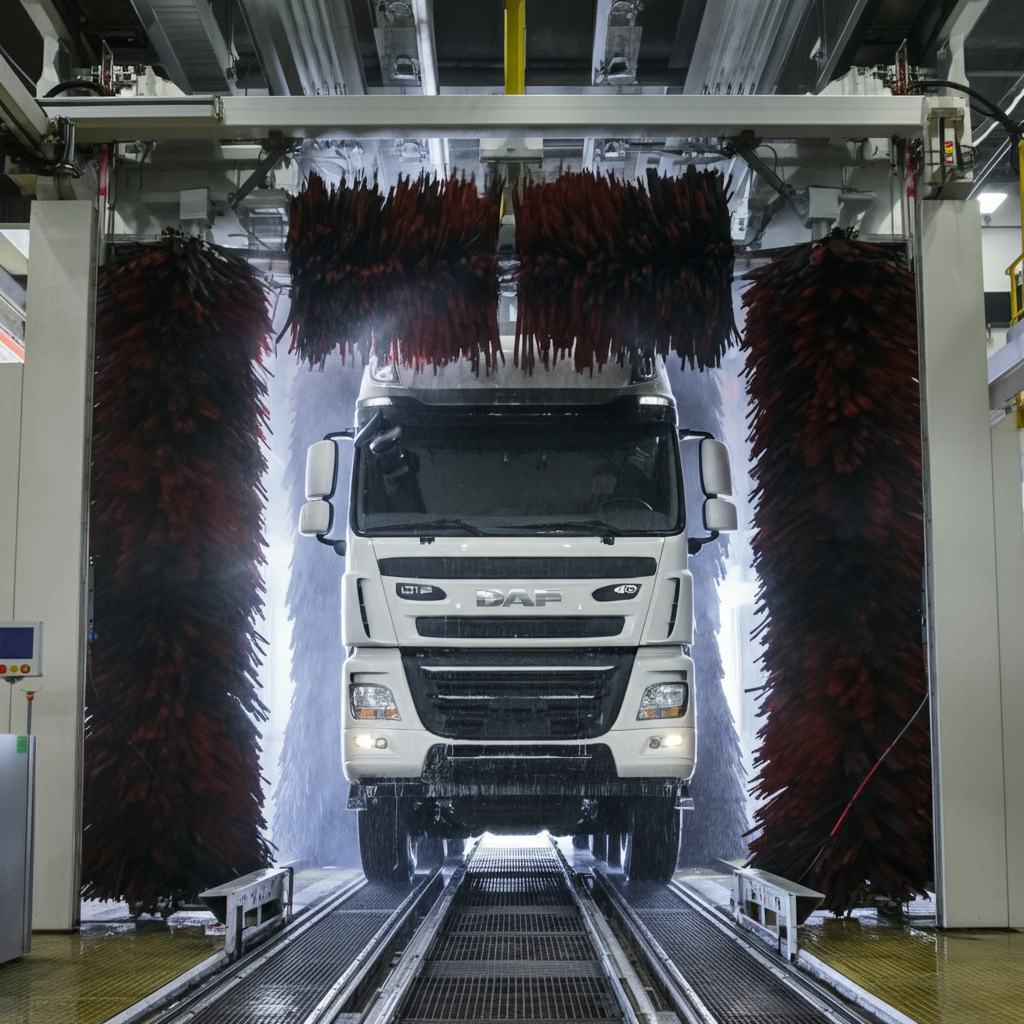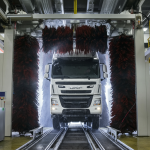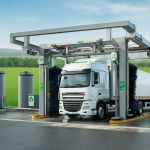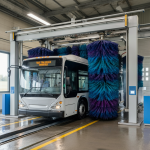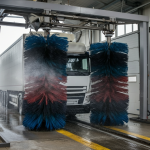For fleet managers and compliance officers, safety is not just a priority—it’s the foundation of the entire operation. Ensuring every vehicle is in top condition before it hits the road is a legal and ethical requirement. While maintenance schedules and driver training are well-established safety pillars, the role of vehicle cleanliness is often underestimated. A layer of dirt, grime, and road salt can hide serious safety issues and complicate mandatory inspections.
Automated vehicle wash systems offer a direct and effective solution to this challenge. By keeping fleets consistently clean, these systems play a crucial role in enhancing safety protocols, streamlining compliance with regulations like those from the Department of Transportation (DOT), and protecting your drivers and the public. This is not just about appearances; it’s about creating a culture of safety from the ground up.
The Critical Link Between Cleanliness and Safety Inspections
Daily vehicle inspections are a non-negotiable part of commercial fleet operations. Drivers are required to conduct pre-trip and post-trip inspections to identify any potential mechanical issues that could compromise safety. However, the effectiveness of these visual checks is severely limited when critical components are covered in mud, salt, or road debris.
Uncovering Hidden Dangers
A clean vehicle is a transparent one. When a truck or bus is free from grime, it is far easier to spot potential hazards that could lead to catastrophic failures on the road. Key inspection points that become more visible after a thorough automated wash include:
- Fluid Leaks: Oil, coolant, or hydraulic fluid leaks are red flags for mechanical problems. A clean chassis and engine bay make it easy to spot drips or stains that would otherwise be absorbed or hidden by dirt.
- Tire and Wheel Integrity: Inspectors can more easily check for tire bulges, cuts, and proper inflation. A clean wheel assembly allows for better examination of lug nuts and hub seals, ensuring they are secure.
- Brake System Components: Brake lines, chambers, and slack adjusters are all vulnerable to damage and corrosion. A clean undercarriage allows for a clear view of these critical parts, making it easier to identify wear or leaks.
- Frame and Suspension Issues: Cracks in the vehicle’s frame or damage to suspension components like springs and air bags can be concealed by caked-on mud. An automated wash clears this away, exposing potential structural weaknesses.
By providing a clean slate for every inspection, automated systems empower drivers and mechanics to perform their duties more effectively, catching small problems before they become major accidents.
Enhancing Compliance with Regulatory Standards
Meeting DOT and other regulatory standards is a constant focus for any fleet manager. Violations found during roadside inspections can lead to costly fines, out-of-service orders, and damage to your company’s Compliance, Safety, Accountability (CSA) score. A clean fleet directly supports your compliance efforts.
Visibility and Conspicuity
Regulations mandate that lights, reflectors, and other conspicuity markings must be visible at all times. Dirt and road film can quickly obscure these features, especially during winter months, making your vehicles less visible to other drivers and increasing the risk of collision. An automated wash ensures that all lights, reflective tapes, and markings are clean and functioning as intended, helping you avoid simple yet costly violations.
A Proactive Stance on Maintenance
A consistently clean fleet sends a powerful message to regulatory inspectors: your company is proactive about maintenance and safety. A well-maintained exterior suggests an equally well-maintained engine and chassis. This professional appearance can foster a more positive interaction during a roadside check and reflects a strong internal safety culture. Investing in high-quality Truck Wash Equipment demonstrates a tangible commitment to upholding the highest operational standards.
Preventing Long-Term Component Degradation
Safety is also about ensuring the long-term reliability of your vehicles. Corrosive materials are a constant threat to the structural integrity and mechanical function of a commercial fleet.
The Fight Against Corrosion
Road salt, de-icing chemicals, and industrial pollutants are incredibly damaging. When left on a vehicle’s undercarriage, these agents accelerate the process of rust and corrosion. Over time, this can weaken the frame, eat away at brake lines, and compromise electrical connections. Manual washing often fails to reach all the crevices where these substances accumulate.
Automated systems, particularly those with undercarriage sprayers, are specifically designed to blast away these harmful contaminants from every angle. By regularly removing corrosive agents, you prevent premature component failure and extend the operational life of your assets. This proactive approach to corrosion control is a fundamental aspect of long-term vehicle safety. The same principle applies to public transport, where reliable and safe vehicles are paramount. Investing in specialized Bus Wash Equipment is essential for protecting fleets from daily wear and tear.
Improving Driver Morale and Accountability
Your drivers are on the front line of your safety program. Providing them with a clean, well-maintained vehicle has a direct impact on their morale and performance. Driving a clean truck or bus fosters a sense of pride and professionalism. It reinforces the company’s commitment to quality and safety, which in turn encourages drivers to be more diligent in their own responsibilities.
When drivers know their vehicle is in top condition, they can focus better on the road. Furthermore, a clean cab environment reduces distractions and contributes to better overall driver wellness. A happy, engaged driver is a safer driver.
A Strategic Investment in Your Safety Culture
Integrating an automated vehicle wash system into your operations is more than just an equipment purchase—it’s an investment in your company’s safety culture. The benefits are clear and far-reaching:
- Improved Inspection Accuracy: Uncover hidden defects before they become on-road failures.
- Enhanced Regulatory Compliance: Avoid fines and improve your CSA scores by ensuring visibility and demonstrating proactive maintenance.
- Increased Vehicle Longevity: Protect your assets from corrosion and premature component failure.
- Boosted Driver Morale: Foster a sense of pride and accountability among your team.
By automating your wash process, you create a systematic, repeatable method for maintaining a clean and safe fleet. It removes the inconsistencies of manual washing and institutionalizes a key component of your safety and compliance strategy. For any fleet manager or compliance officer dedicated to achieving the highest safety standards, an automated wash system is an indispensable tool.
